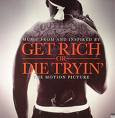While most traders understand that it is important to apply stop loss strategy to all their positions, they often don’t know where to set them. How close should stop loss strategy be to price of the position they are entering? Should they be tight - set quite close to the price, or a little looser? And what about trailing stop loss strategy? Here are some factors to consider that will help you decide about your stop loss strategy. Not every one of these applies to every trade, but the ones that do will give you some useful guidelines.
Perhaps the most important factor that affects stop loss strategy is the question of how much you're willing to lose on a single trade. My rule of thumb is that you should never lose more than 2% of your trading capital on any one trade. Yet this can be tempered by other stop loss strategy considerations, such as how much money you have in the position. If you have a large amount of money in a position, 2% may be much more than you're willing to lose.
If so, you should set stop loss strategy accordingly. However, if your account is small and you're not well diversified, a 2% stop may be so tight that you stop out of the position almost immediately. If this is the case, you should think seriously about whether you have enough money to trade.
Another stop loss strategy to take into account is how risky you believe the trade to be. If you think the trade is a sure winner and market conditions are favourable, you may give the position more room to move. But if you think it's got only a fair chance of working out, or if the position has serious potential to drop, set a tight stop loss strategy. Also consider how volatile the position is. If the position routinely moves up and down in a range of 15% or more over the course of the day, you can't set tight stop loss strategy. If you do, you'll be taken out by the position’s normal volatility. If the position is choppy but too risky to trade without tight stop loss strategy, maybe you'd better look for a better position to trade.
If you have reason to be confident that the position will move upward even if it swings around a bit first, it doesn't make sense to set a tight stop loss strategy because you'll just stop out as it swings. However, if you think it might possibly move up but will definitely drop if it slips below a certain price, then tight stop loss strategy is a must.
There are also a couple of basic questions to ask yourself about the position to help you decide where to place stop loss strategy. First, is the position cheap? When a position is inexpensive, even the smallest decimal price movement will be fairly large in percentage terms. This means tight stop loss strategy may be knocked out more easily. It also means that if your broker has a rule that you can't set stop loss strategy closer than .25 below the current bid, you may not be able to set tight stop loss strategy until the price moves up. And second, what is the time frame for the trade? On a quick day trade, tight stop loss strategy is a good idea. On a position you expect to hold for a week or two for a trend play, tight stops may or may not be a good idea depending on other factors that you're aware of.
Market conditions should always be an important part of your decision. If the market is trending sharply upwards, tight stops may not be necessary. If you're trying to go long in a bearish market, tight stops are absolutely necessary. If the market is choppy - if it has no clear direction or if it's full of nervousness and fear - use tight stop loss strategy, and ask yourself whether you should be trading at all that day.
Which of these considerations is the most important? Since no two trades are the same, different factors will dominate on different trades. Think about all of them on every trade. If you don't, you'll miss something important. Setting stop loss strategy is an “art”. You’ll have to experiment a bit and learn what works for you. Occasionally you may stop out of a trade too soon and feel frustrated, but remember this is just like paying for insurance. Sometimes you’ll be stopped out, but other times, you will save your capital.
Over time, you’ll get better at setting stop loss strategy. Eventually, you will be able to have a sense of each trade, and set the stop loss strategy that work best for you. Then you will be a nimble and successful trader who can trade with any market.
-





No comments:
Post a Comment